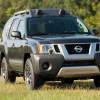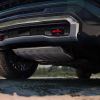
What Breaks on the 2021 Tesla Model Y the Most?
Tesla has seen a lot of popularity with its Model Y electric SUV. To find out what breaks on the 2021 Tesla Model Y the most, the National Highway Traffic Safety Administration has many complaints. Some of these common problems have been addressed with recalls, but others have not. Tesla can do over-the-air (OTA) updates to fix issues without going into the service center.
What breaks on the Tesla Model Y?
According to the National Highway Traffic Safety Administration, the 2021 Tesla Model Y has some problems with phantom braking and vehicle speed control. Based on how Tesla builds its vehicles and the variations between the models, the NHTSA has many listings for each year.
There are 714 complaints on the NHTSA listing for the Tesla Model Y five-seat model with rear-wheel drive. The vehicle speed control category has the most responses from owners. Many comments are as recent as this week, with drivers noting that the forward collision warning does not work as described. Acceleration and deceleration are common, including on the highway. There are mixed reports about autopilot and Full Self-Driving engagement. At times, the 2021 Tesla Model Y would apply the brakes without reason or when no other vehicles or objects were in the way.
Tesla has been addressing the issue via recalls since October 2021 with NHTSA Campaign Number 21V846000. This recall addresses an error that may cause forward-collision warning to activate. If that happens, the automatic emergency braking system engages. Tesla has not fixed the problem based on the number of recent owner complaints.
Tesla’s airbags can malfunction on the Model Y
On the 2021 Tesla Model Y, there are complaints that the airbags break or malfunction. Some drivers report that the airbags did not deploy after a collision, which increases the risk of injury. Others say that the airbag light does not turn on, recognizing that someone is in the seat.
There are many reports from owners about the airbags not working as anticipated on the 2021 MY. It doesn’t seem very clear what the issue is, making it harder to diagnose. Coupled with the phantom braking problem, this is a considerable hazard.
There is a recall related to the seat belt chime not activating, which would not remind the driver or passenger to buckle after getting in. This recall has NHTSA Campaign Number 22V045000 and impacted 817,143 units. Tesla’s OTA update system is capable of fixing some of these issues.
The MY has had some issues with the doors
Many drivers complain about the door handles being an issue. The Tesla Model Y door handles break frequently, which renders the handles unusable. These handles need to pop out to open the door, meaning you cannot get inside. Unfortunately, passengers cannot open the doors from the inside. It is also possible the doors cannot be opened from the outside. The door latches have been blamed in some cases, but the problem occurs even after being fixed at the dealership.
A recent study looked at brands with the most projected recalls over 30 years, and Tesla was at the top. The top 10 most frequently recalled vehicles are below, with each of the Tesla models in the first five spots. The Tesla Model Y, 3, X, and S all had more recalls than other vehicles. Even though recalls are intended to make vehicles safer, many recalls might indicate that the Model Y is unreliable.
The Tesla Model Y has 62.4 projected recalls over 30 years, landing it in the top spot. That is about 15 times more than the average vehicle. These things that break on the Tesla Model Y point to a more significant safety issue. With more than 700 complaints and 15 recalls after less than three years on the market, Tesla has some work to do on its EVs and reputation.



